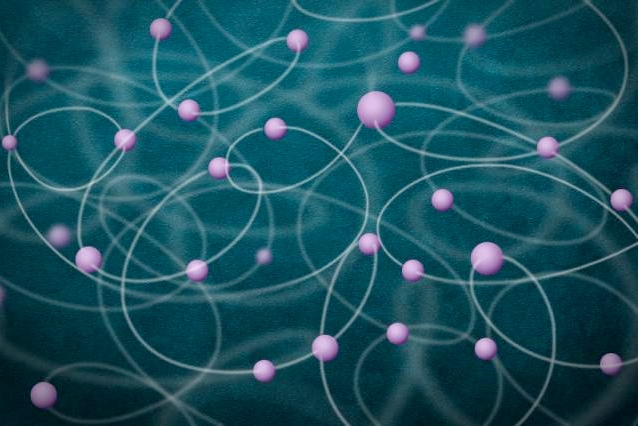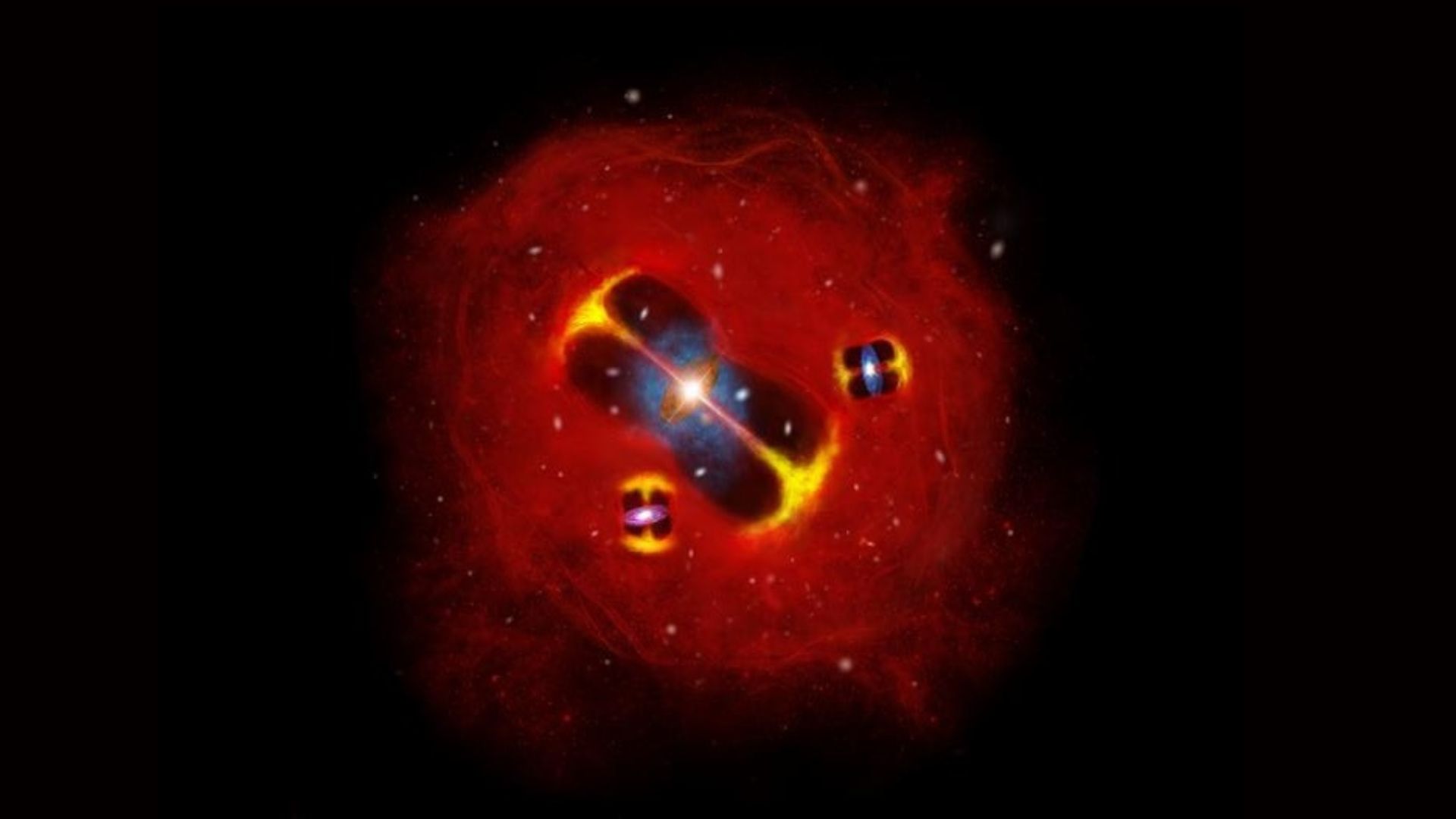Quantum Record! 3,000 Atoms Entangled in Bizarre State

Using a single particle of light, scientists have for the first time linked together thousands of atoms in a bizarre state known as quantum entanglement, where the behavior of the atoms would stay connected even if they were at opposite ends of the universe.
This finding, the largest number of particles that have ever been mutually entangled in an experiment, could lead to more precise atomic clocks, potentially helping to improve GPS, researchers say.
The behavior of all the known particles can be explained using quantum physics. A key feature of quantum physics is that the world becomes a fuzzy, surreal place at its very smallest levels. For instance, atoms and other fundamental building blocks of the universe actually exist in states of flux known as "superpositions," meaning they can seemingly be located in two or more places at once. [5 of the Most Precise Clocks Ever Made]
One consequence of quantum physics is quantum entanglement, wherein multiple particles can essentially influence each other simultaneously regardless of distance. Einstein dismissed this seemingly impossible connection as "spooky action at a distance," but numerous experiments have proven quantum entanglement is real, and it may serve as the foundation of advanced future technologies, such as incredibly powerful quantum computers and nigh-unhackable quantum encryption.
One key application of quantum entanglement is to enable extraordinarily precise atomic clocks, which are vital to GPS. "Today's atomic clocks have reached an almost unimaginable level of accuracy — the best would be less than a minute off if they ran since the Big Bang," study co-author Vladan Vuletić, a quantum physicist at MIT, told Live Science.
Today's best atomic clocks are based on oscillations seen within a cloud of trapped atoms, which make them essentially act like pendulums, keeping a steady beat. A laser beam fired through such a cloud can detect the vibrations of the atoms and use them to tell time. The accuracy of atomic clocks improves as more and more atoms oscillate within a cloud. Since entangling atoms links their behavior, the more atoms researchers entangle, the more they might oscillate together, improving their use in timekeeping.
Until now, scientists had entangled together 100 atoms at most. Moreover, these atoms represented only a small fraction of the larger clump of atoms in the experiment.
Get the world’s most fascinating discoveries delivered straight to your inbox.
Now Vuletić and his colleagues have successfully entangled together nearly 3,000 atoms, almost all of the cluster of 3,100 atoms they were a part of. Moreover, they did so using only single photons, which are particles of light.
"The fact that you can influence so many particles with just one single photon is the most surprising finding," Vuletić said.
The researchers first cooled a cloud of rubidium atoms to only a few ten-millionths of a degree above absolute zero, the coldest possible temperature. They next trapped the atoms between two slightly transparent mirrors and fired weak laser pulses through one of the mirrors. The pulses contained as little as a single photon, and bounced back and forth between the mirrors, passing about 5,000 times through the cloud. [How Quantum Entanglement Works (Infographic)]
A photon can be thought of as a wave oscillating in space. If a photon in one of the laser pulses passed through the cloud without interacting with any of its atoms, the polarization of the photon — the orientation of its ripples — would remain the same.
If a photon in a pulse interacted with the cloud's atoms, the polarization of the photon would rotate slightly. Strangely, in the realm of quantum physics, the act of measurement can dramatically influence the object getting measured, and the act of detecting a photon that interacted with these atoms can essentially generate entanglement between those atoms.
The key to the research team's success was using extremely weak pulses of light. "Previously, experiments used far more photons, tens of thousands or millions of photons, which added a lot of noise to the experiments," Vuletić said. "We just used single photons, which perturbed the atomic ensembles much less."
The researchers suggest it should be simple to entangle together still more atoms. "We could go to entangling a million atoms relatively straightforwardly," Vuletić said.
The scientists are currently using this single-photon detection technique to build a state-of-the-art atomic clock, "which could improve timekeeping by a factor of two," Vuletić said. In addition, the researchers aim to achieve even more complex entangled states — the kinds needed in applications such as quantum computing.
Vuletić and his colleaguesdetailed their findings in the March 26 issue of the journal Nature.
Follow Live Science @livescience, Facebook & Google+. Original article on Live Science.



